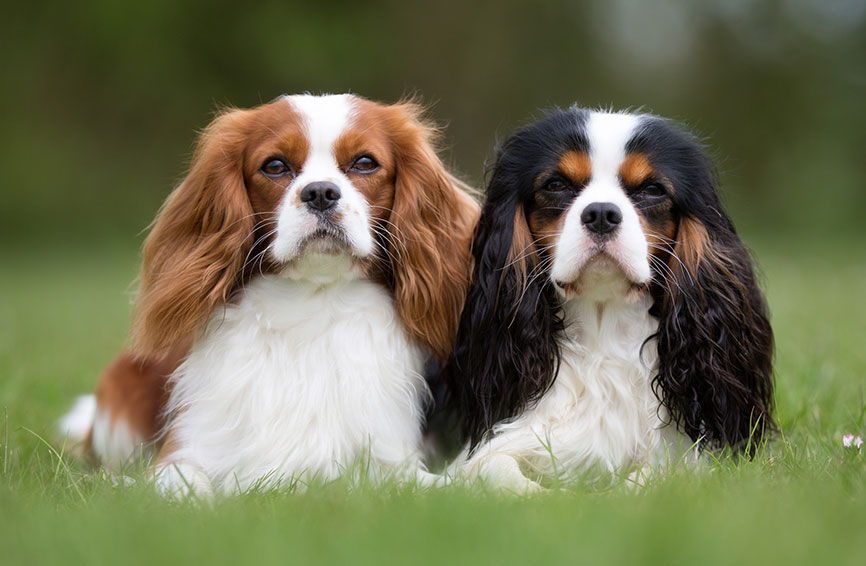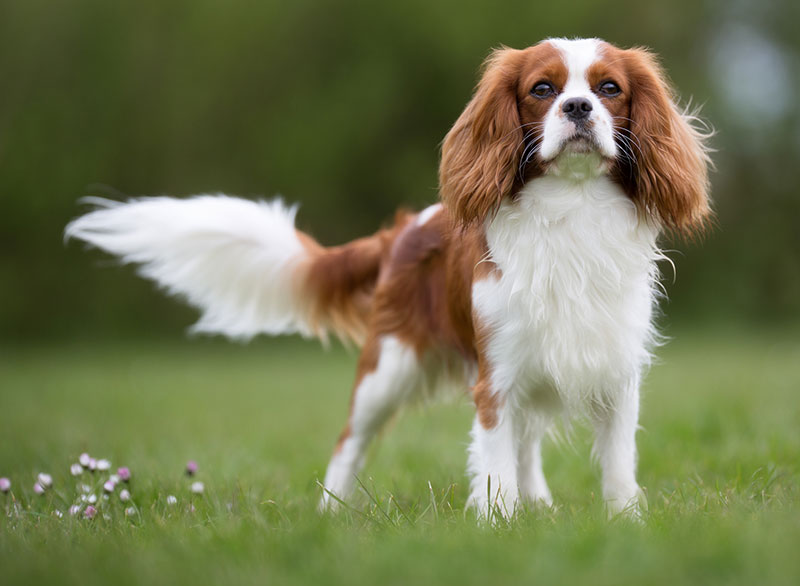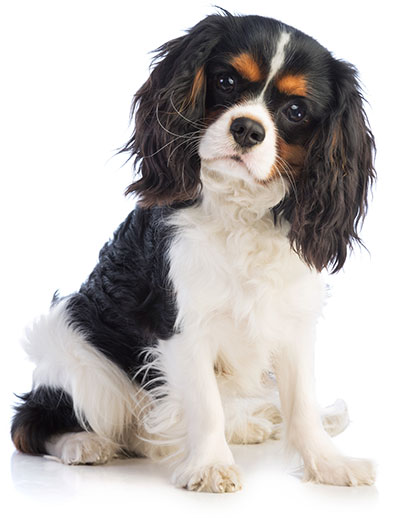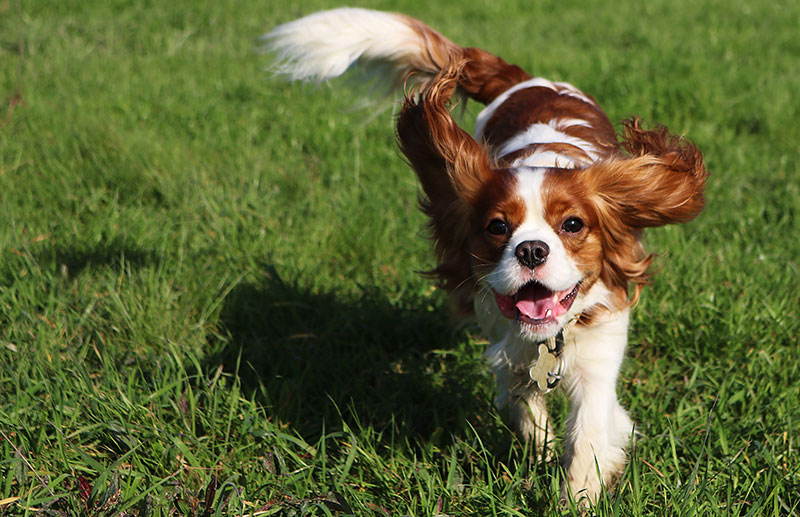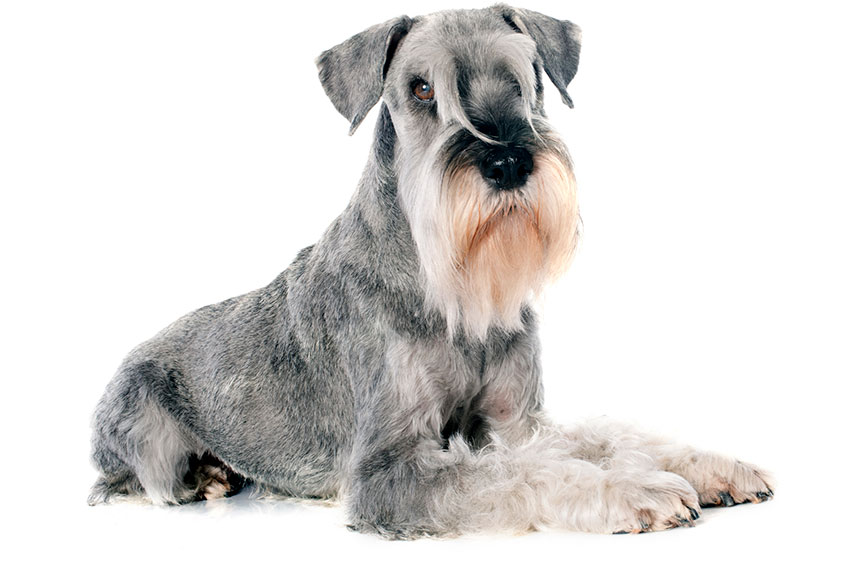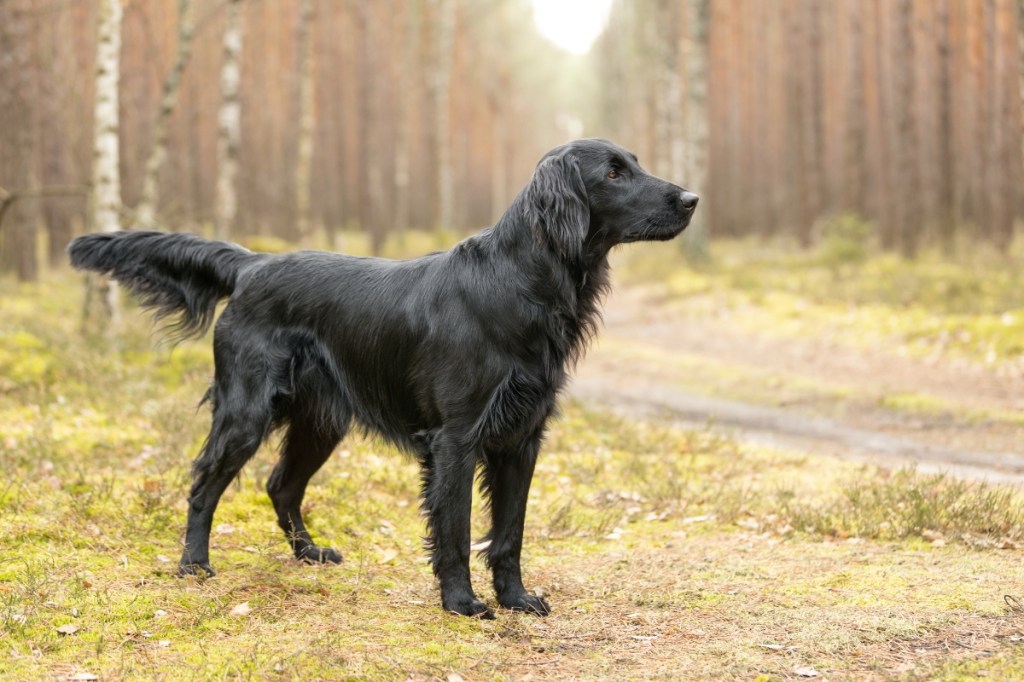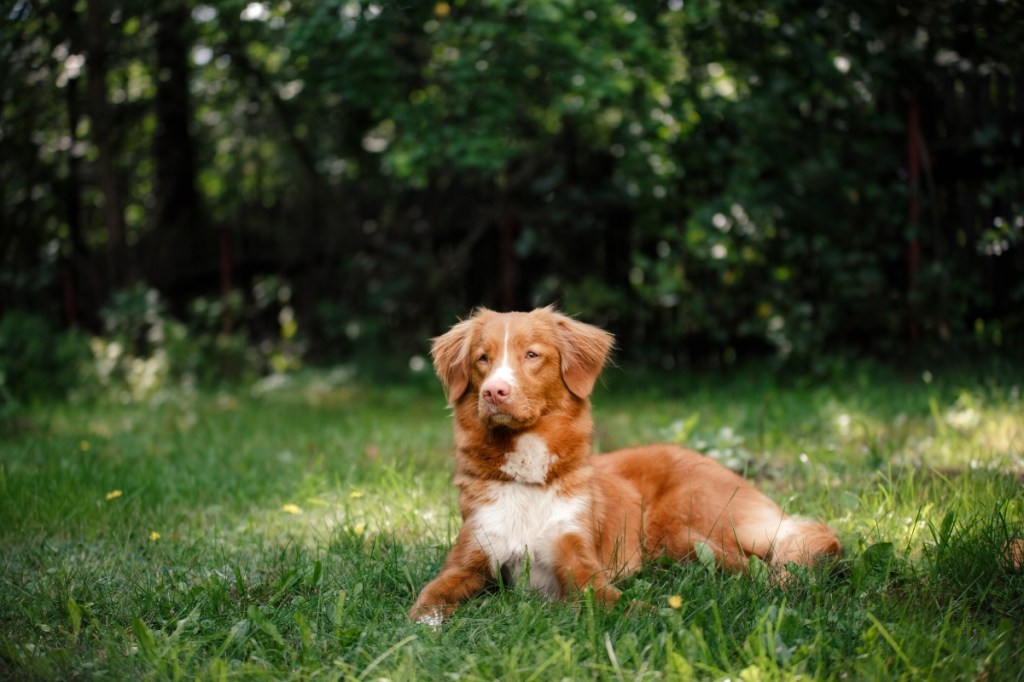Table of Contents
Introduction to Cavalier King Charles Spaniels
As the breed’s name suggests, the cavalier King Charles spaniel has ties to royalty and is a beautiful sporting dog that loves being on your lap. These are gentle and affectionate pups that are part of the American Kennel Club’s Toy Group because of their small size. They are not suspicious of strangers and are very good with both kids and other dogs if properly socialized. Therefore, they make excellent family companions and love spending their days indoors with lots of cuddles and playtime. Cavalier King Charles spaniels have a graceful demeanor but are actually quite athletic, too; they can actually be successful as hunting dogs.
Are you interested in bringing a wonderfully elegant and friendly cavalier King Charles spaniel into your household? Then read on to learn more about this breed and how you can protect your pup no matter what happens with cavalier King Charles spaniel pet insurance.
Size of Cavalier King Charles Spaniels
When fully grown, a cavalier King Charles spaniel will be about 13 to 18 pounds for weight and 12 to 13 inches tall for height. As with pretty much all dogs, the males are a little larger than the females. But both genders stop growing at about 12 months of age. These dogs do most of their growing as very young dogs and reach about 75% of their full height and weight by the age of six months.
Here’s how big you can expect your cavalier King Charles spaniel to get when fully grown.
| Weight Chart | 3 months | 6 months | 9 months | 12 months |
| Male and Female Cavalier King Charles Spaniels | 5.7 – 7.9 pounds | 10.3 – 14.1 pounds | 12.3 – 17.1 pounds | 13.0 – 18.1 pounds |
Characteristics of Cavalier King Charles Spaniels
Cavalier King Charles spaniels make great lap dogs but still need daily exercise to stay healthy and in good shape. They have many desirable characteristics because they are adaptable, happy, and have tails that are almost constantly wagging. Their dark and round eyes, as well as their consistent desire to please and sensitive personalities, will make you instantly fall in love with this breed.
As you get to know a cavalier King Charles spaniel’s personality, here’s what you can expect based on his or her breed characteristics.
| Breed Characteristic | Level (High, Medium, Low) |
| Affectionate with People | High |
| Good with Kids | High |
| Good with Pets | High |
| Need for Exercise | Medium |
| Energy Level | Medium |
| Intelligence Level | Medium |
| Able to Be Trained | Medium |
| Amount of Barking | Low |
| Amount of Shedding | Medium |
History of Cavalier King Charles Spaniels
The history of the cavalier King Charles spaniel dates back to Renaissance times when toy spaniels were kept by European nobility. King Charles I and Charles II had toy spaniels in the 17th century in Britain, and these dogs were prized by the monarchs. The toy spaniels were bred with Asian toy dogs, such as pugs and Japanese chin. This created what was known as the English toy spaniel, which had a flatter face and domed skull than the modern cavalier King Charles spaniel.
However, in the 1920s, there was some interest in reviving the old-world-style of toy spaniels, and a wealthy American named Roswell Eldridge offered money to British breeders to recreate this type of dog. The result of this breeding was today’s cavalier King Charles spaniel. There are four color patterns of these dogs that make them distinctive: rich red, black with tan markings, black markings on white, and chestnut markings on white.
The American Kennel Club started officially recognizing this breed in 1995. But the dogs made their appearance in America starting in the 1940s and 1950s.
Cavalier King Charles Spaniels Standard Information
In general, cavalier King Charles spaniels are well-balanced, graceful, and active dogs that have a sporting-style character and a gentle temperament. They have a royal appearance and natural beauty that requires no trimming or alteration.
According to the American Kennel Club, here is an overview of the breed standard information for cavalier King Charles spaniels:
Head:
- Proportional and neither too large nor small
- Sweet expression
- Large and round eyes of a dark brown color
- High set ears with lots of feathering
- Slightly rounded skull without dome or peak
- Full, slightly tapered muzzle
Neck, Topline, Body:
- Fairly long and slightly arched neck
- Level topline with moving and standing
- Short-coupled body with ribs sprung (elliptical, slightly rounded shape) but not barreled (circle shape)
- Moderately deep chest
- Well set tail, carried happily
Forequarters:
- Shoulders well laid back
- Pasterns strong (the pastern is the area below the wrist and above the foot)
- Feet compact
- Dewclaws can be removed
Hindquarters:
- Stifles (knees) well turned and hocks (ankles) well let down
- No cow or sickle hocks
Coat:
- Moderate length and silky
- No curls but waves permissible
- Feathering on ears and feet
- No trimming permitted
Color:
- Tricolor, ruby, black and tan, or Blenheim colorations
Gait:
- Elegant and free moving
- Good length of stride
Caring for Cavalier King Charles Spaniels
These types of dogs love being around their humans and are very devoted to people. Therefore, they do best in households where someone is home most of the time to spend time with them. Cavalier King Charles spaniels make good emotional support dogs for this reason. It is common for cavalier King Charles spaniels to follow you around the house, and they don’t need a lot of space in a home to thrive.
They do well in both houses with fenced-in yards and small apartments. But whenever you take your pup on a walk, make sure he or she is on a leash, because this dog will go after interesting smells and chase birds.
Here are some general tips for taking the best care of a cavalier King Charles spaniel:
Best Living Environments:
- Houses with yards
- Apartments with no yard are fine, too
- Doesn’t do well in hot weather
- Avoid cold and snow to prevent frostbite around furry toes
- Keep indoors most of the time
Type of Exercise:
- Running around the house
- Games of fetch in a yard
- Short walks on a leash
Mental Enrichment:
- Playtime with other dogs and children
- Plenty of time relaxing on your lap
- Challenging toys for stimulation
Training Strategies:
- Needs positive reinforcement from a young age
- Puppy training classes
- Moderately easy to train
Grooming Tips:
- Brush coat two to three times per week
- Bathe as needed to prevent matting
- Trim nails, clean ears, and brush teeth
Common Health Problems of Cavalier King Charles Spaniels
Cavalier King Charles spaniels are long-living dogs that have a life expectancy of 12 to 15 years. They are generally healthy dogs, but there are some health concerns that pet parents should be aware of when they go to a vet for regular checkups and as their dogs get older. For example, many cavalier King Charles spaniels get mitral valve disease, which is a heart condition that causes heart murmurs and weak heart valves.
These are some of the most common health issues that arise with cavalier King Charles spaniels:
- Mitral valve disease
- Syringomyelia (skull malformation that affects the spine and brain)
- Idiopathic asymptomatic thrombocytopenia (blood platelet issue that affects clotting)
- Episodic falling (due to not being able to relax muscles)
- Hip dysplasia
- Dry eye
- Patellar luxation (loose kneecaps)
Diet and Nutrition for Cavalier King Charles Spaniels
As small dogs, cavalier King Charles spaniels need about ½ cup to one cup of dry dog food per day. Divide this total daily amount into two meals. To prevent overeating, don’t leave food out all of the time. Wet dog food can get into the dog’s fluffy ears and fur, so tie the ears and fur back with a scrunchy or headband during eating sessions if this becomes a problem.
Some recommended types of commercial dog foods for cavalier King Charles spaniels are Hill’s Science Diet Dry Dog Food (Adult, Small Bites, Chicken & Barley Recipe), Natural Balance Fat Dogs (Low-Calorie Chicken Meal, Salmon Meal, Garbanzo Beans, Peas & Oatmeal – Adult Low-Calorie Dry Dog Food for Overweight Dogs), and Hill’s Prescription Diet (Joint Care Dog Food).
Where to Adopt or Purchase Cavalier King Charles Spaniels
The American Cavalier King Charles Spaniel Club is an AKC member club that offers educational and health resources about these dogs, as well as links to where to find a reputable breeder and purchase a puppy. Finding a good breeder is important so that your new dog doesn’t have health conditions that could have been avoided through responsible practices.
If you are interested in adopting a cavalier King Charles spaniel, check out the website for the ACKCS Rescue Trust, which is a nonprofit organization dedicated to this breed and helping these dogs find loving homes. Meanwhile, other adoption resources for this breed of dog include Cavalier Rescue USA, Cavalier Alliance, and Lucky Star Cavalier Rescue.
Related Breeds
People who enjoy cavalier King Charles spaniel dogs might also be interested to learn about similar and related breeds as well. Here are some other types of dogs that share similarities in appearance and/or temperament to the cavalier King Charles spaniel:
- Cocker spaniel
- English toy spaniel
- Japanese chin
- Pug
- Bichon frisé
- Lhasa apso
- Brittany spaniel
Pet Insurance for Cavalier King Charles Spaniels
It’s impossible not to love a cavalier King Charles spaniel once you welcome one into your home. We also understand that you want to do everything in your power to protect your dog from sickness and harm. When you get a Healthy Paws pet insurance policy for your cavalier King Charles spaniel, you can feel confident that you’ll be able to afford necessary vet care when something goes wrong. We never want you to have to make an impossible decision between doing what’s best for your dog and putting yourself in a bad financial position.
Request your cavalier King Charles spaniel pet insurance quote today to take this first important step to having many more wonderful days with your fluffy pup by your side.
